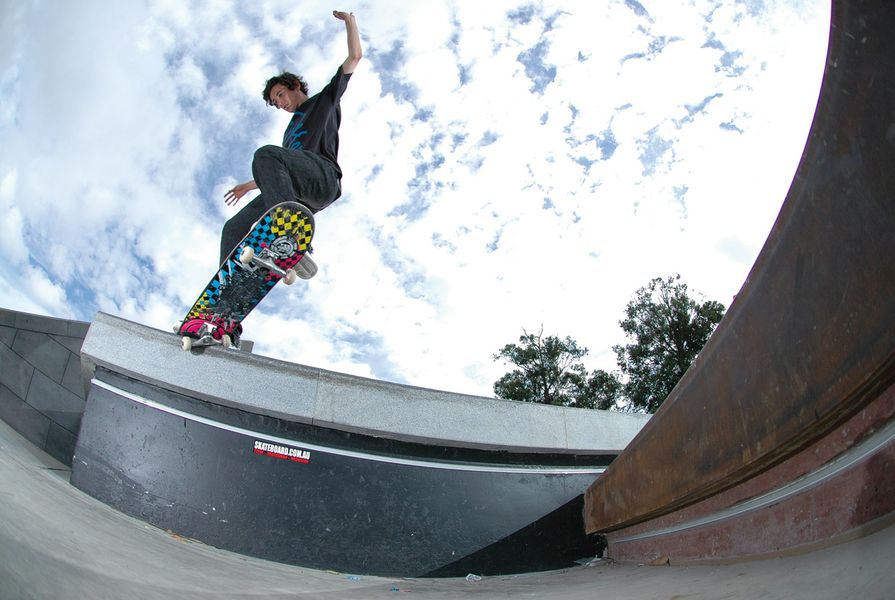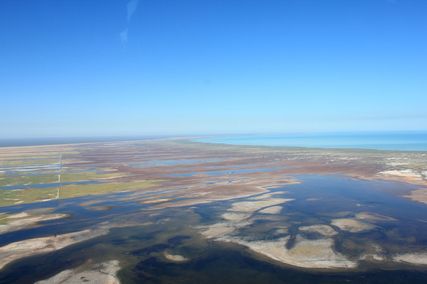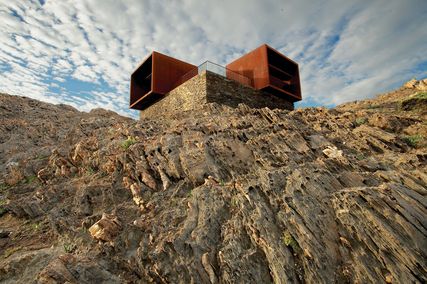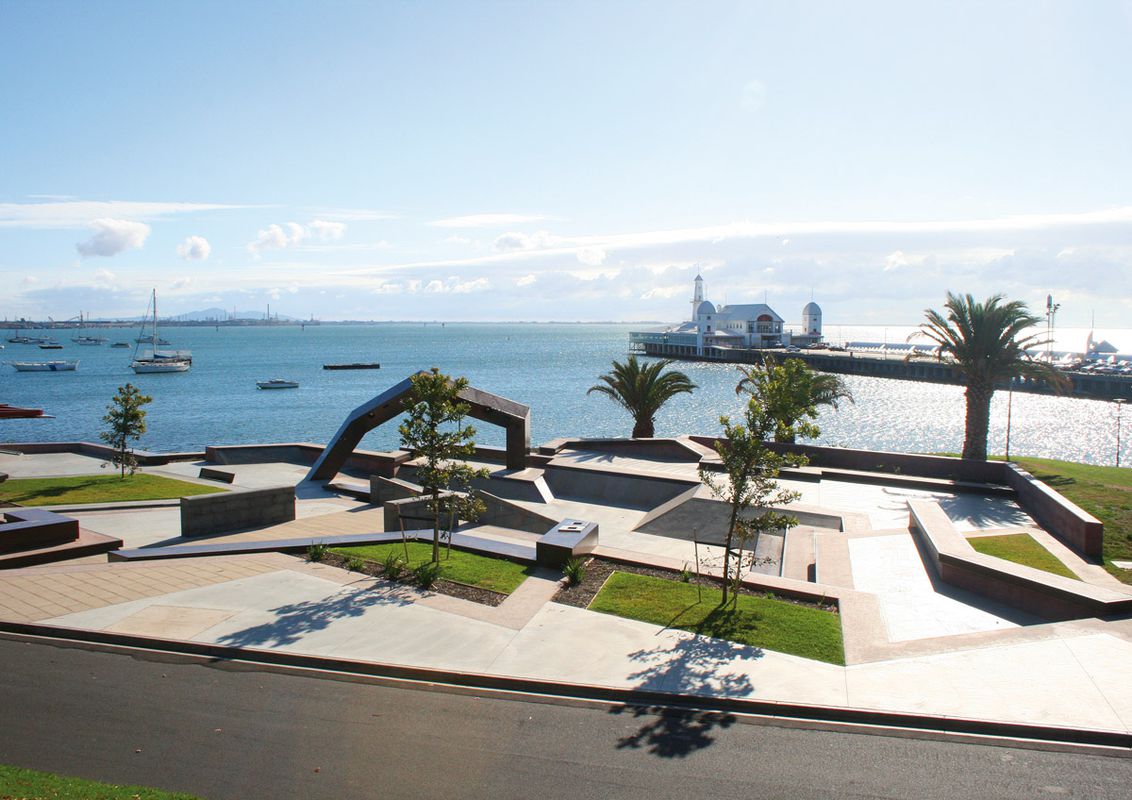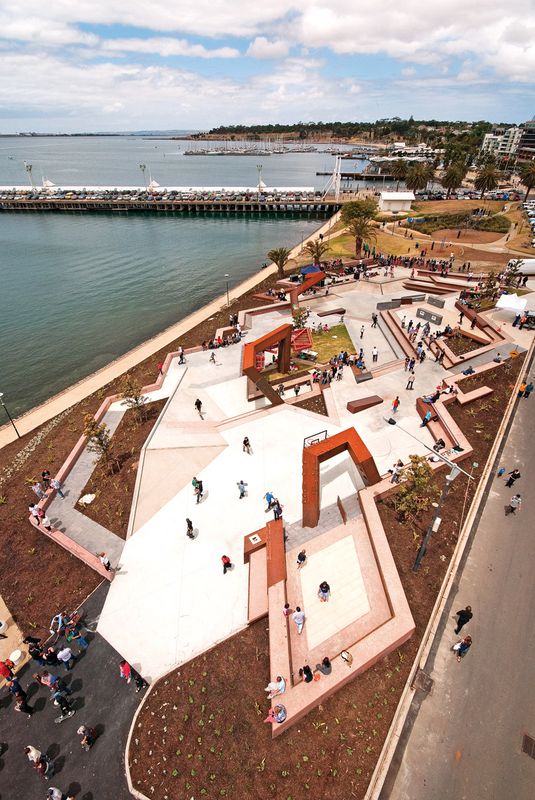At the 2009 AILA Victoria Project Awards the Geelong Youth Activities Area (GYAA) by Convic Design achieved the prestigious double, receiving the Victoria Medal in Landscape Design and the Award for Excellence in Design. The jury was impressed by Convic’s ability to deliver a multipurpose recreation facility attractive to a wide cross-section of the community, saying it represented “a new benchmark for intergenerational public spaces in Australia.” Officially opened in December 2008, the GYAA, located at the western end of the Geelong waterfront precinct, exceeded the initial brief that called only for a skate park, providing a centralized plaza where art, sport, music and markets can also be staged.
Established in 2003, Convic Design has created and refined their own niche in recreational landscape design, catering for the previously neglected teenage space between the playground and the pub. During this time Convic has designed hundreds of skate parks in Australia and Asia including the world’s largest, the 14,000-square-metre SMP Park in Shanghai. Not content with simply churning out exclusive areas for youths who skate, Convic has begun incorporating opportunities for a range of activities within their designs, encouraging all-ages participation with an emphasis on activities that are enhanced by digital technologies. Their central tenet is that space is evolutionary, so their designs must be flexible enough to accommodate changes in use over time. Convic’s philosophy is also in line with recent landscape design thinking that regards input from young users as inherent in the park design process.
There is something less than inspiring about the designated name (no doubt constrained by the breadth of purpose the City of Greater Geelong wished to impose upon public perceptions of the site), which resonates with staid connotations reminiscent of a young offender’s detention centre or an archaic planning zone document. The catchier acronym GYAA fares better, being a homophone suggestive of James Lovelock’s holistic hypothesis about life on earth (Gaia). The place-making is left to the attributes of the site itself, unaided by imaginative connotations suggested by place naming, such as the Garden of Australian Dreams outside the National Museum in Canberra.
Jutting edges around the perimeter are reminiscent of naval fortifications and recall Geelong’s maritime history.
Image: Virginia Lee-Laurie
The design of GYAA is explicit in its use of raw materials juxtaposed in sharp zigzagging angles to provide a series of terraced surfaces with skaters very much in mind. Coloured concrete bands and ramps are combined with bluestone retaining walls and mild steel box sections to provide a bold iconography that reflects Geelong’s industrious maritime history. Three differently contorted steel gantries provide sculptural relief as well as housing multimedia technologies. The bands of coloured concrete extend through the bluestone and granite paved plaza, visually linking the patinated steel gantries within the internal planes of the plaza and helping to emphasize the medley of angular jutting edges that extrude around the site’s perimeter, reminiscent of naval fortifications.
Vegetation is kept to a minimum within GYAA, helping preserve the openness and raw qualities conveyed by the hard landscaping materials. Agathis robusta (Kauri Pine) is used judiciously within the plaza, as are small patches of lawn, while most of the groundcover plantings are employed as slope stabilizers on the peripheral embankment facing the foreshore. Run-off from the terraces feeds directly into adjacent sedimentation swales, where it is filtered before discharging into Corio Bay.
The intergenerational aspect is nowhere more apparent than the local commercial radio station emitting from the gantry speakers all the hits of the 80s, the era when the skater’s parents were youths themselves. Wireless Internet connectivity and iPod jacks are housed in the gantries, and while you can’t please everybody’s taste in music, some finetuning by Council needs to be addressed in regards to licensing agreements and authorization of a wider range of appropriate broadcast content. The truss-shaped gantry next to the stage provides three-phase power, switchboard and gobo art lighting to aid live performances. Convic has transcended the design shortcomings that often fail to relieve perceptions of danger, inhospitality or melancholy associated with public spaces after dark. A brilliant feature of GYAA is its illumination at night, when red LED strip lighting at the edges of the plaza terraces, assisted by white spotlights overhead, draw people to the area like moths to a flame. Paradoxically, the City of Greater Geelong’s conditions of use signage states that the facility can only be used during daylight hours between sunrise and sunset. This black-and-white local bylaw controlling access to GYAA is further emphasized by the adjacent car park with its 11:00 PM- 6:00 AM parking curfew. While enforcement is unlikely to be draconian or even occur, it appears that some tweaking may be required by Council for the area to become legitimately open and uncontested.
Skateboarder Jack Crook performs a switch crooked grind at “the new benchmark for intergenerational public spaces in australia.”
Image: Dean Brookes
The presence of GYAA and the effect of transforming the western end of the Geelong waterfront will also impel adjustments to the surrounding landscape. The eastern edge of the plaza nestles smoothly into the lawn containing the children’s playground, but the adjacent car park to the west of the site will undoubtedly be considered for a tidier integration into the overall waterfront precinct. Convic is in discussion with the City of Greater Geelong for the development of GYAA Stage 2, which would link the area’s southern perimeter beside the service road with Western Beach Road and the city and university precinct just beyond. The current grassed embankment would be replaced with a series of steps and viewing areas that would continue the angular terraced form of GYAA and better articulate connectivity with the waterfront for pedestrians arriving from the city. This design proposal includes an elongated, concertinaed climbing wall set against the retaining wall cut into the embankment, and the continuation of the axis linking the existing flight of stairs in the GYAA plaza with a new flight beginning from the top at the Western Beach Road and Gheringhap Street intersection.
Convic’s GYAA is reminiscent of Adriaan Geuze’s transformation of a dysfunctional public space in Rotterdam, Schouwburgplein (1996), utilising industrial designed light masts and media towers along with bold textured surfaces to encourage community repossession of the space. The appearance of GYAA ensures that a similarly resuscitative process is now evolving at the western end of the Geelong waterfront.
Credits
- Project
- Geelong Youth Activities Area
- Landscape architect
- Convic
- Consultants
-
Contractor
Canteri Bros Constructions
Lighting and electrical engineers Webb Australia Group
Structural engineer Cardno Grogan Richards (Vic)
- Site Details
-
Location
Waterfront,
Geelong,
Vic,
Australia
- Project Details
-
Status
Built
Design, documentation 12 months
Construction 7 months
Category Landscape / urban
Type Public / civic
- Client
-
Client name
City of Greater Geelong
Website geelongaustralia.com.au
Source
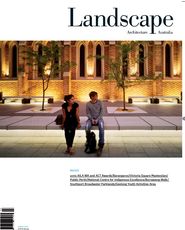
Report
Published online: 1 Aug 2010
Words:
Julian Bull
Images:
Dean Brookes,
Nathan Dunn,
Virginia Lee-Laurie,
Wade Trevean
Issue
Landscape Architecture Australia, August 2010

